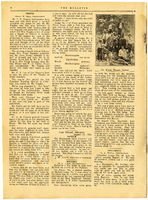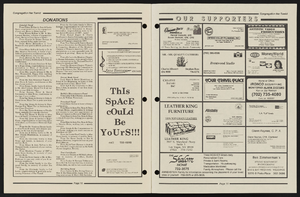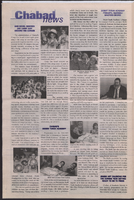Search the Special Collections and Archives Portal
Search Results

Transcript of interview with Ann Clark Kanie by Lois Goodall, March 20, 2014
Date
Archival Collection
Description
Born and raised in Las Vegas, Ann Clark Kanie, elementary teacher, exemplifies the love of teaching in Clark County. Her mother, Marie Larson Clark Dane, taught elementary school at Lincoln Elementary School for 35 years. Ann attended Lincoln Elementary with her mother, Jim Bridger Junior High, Rancho, and then graduated from UNLV in elementary education. She also began teaching, like her mother, at Lincoln Elementary in North Las Vegas but later changed to Wasden Elementary which she obviously admires. Ann recalls growing up in Las Vegas and the fun that she and her friends enjoyed: participating in Helldorado Week, renting horses at Tule Springs or Old Nevada, riding bikes to the Meadows Mall and the Black Hole at the Springs Preserve, sliding down Becker’s Super Slide on Decatur Avenue, watching Disney movies at the Huntridge Theater, playing miniature golf and ice skating at Commercial Center, and going to Lake Mead and investigating the Potosi Mines. Ann married, continued teaching at Wasden. Her only son has chosen to follow his mother’s footsteps, graduated from UNLV in English education and teaches and coaches at Cimarron-Memorial High School. Even though she admits that teaching has become a very difficult, time-consuming job, it is obvious that Ann Kanie loves educating students and has passed this love on to her son.
Text
Series II: Ronzone Family History Materials, 1900-1991
Level of Description
Scope and Contents
Series II provides a history of the Ronzone family, mostly through newspaper clippings and photographs. Thirteen black and white photographs depict scenes in turn-of-the-20th- century mining towns in Alaska, possibly including Nome and Sitka. Bertha and her husband A. B. "Ben" Ronzone were originally in Alaska during the gold rush between 1900 and 1904 before they came to Nevada; these pictures were taken just after that time. Six other photographs in this series feature Ann, Dick, and Bertha Ronzone in social and other contexts. There are also newspaper clippings about Bertha Ronzone and the rest of
the family, telling the story of their pioneer years in central Nevada and their migration to and success in Las Vegas. Finally, there are various obituaries for Dick Ronzone, a list of possible Ronzone relatives, and some personal programs and ephemera from funeral and other personal events.
Archival Collection
Collection Name: Ronzone Family Papers
Box/Folder: N/A
Archival Component
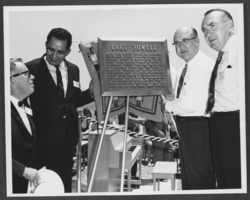
Photograph of Powell Commemorative Ceremony, Lake Powell, June 19, 1969
Date
Archival Collection
Description
Image
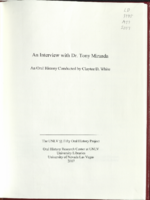
Transcript of interview with Dr. Tony Miranda by Claytee D. White, July 24, 2006
Date
Archival Collection
Description
Text
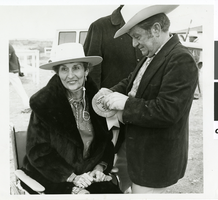
Photograph of Judy Bayley and Senator Howard Cannon at one of the trailrides, Las Vegas, Nevada, circa 1968-1971.
Date
Archival Collection
Description
Image

